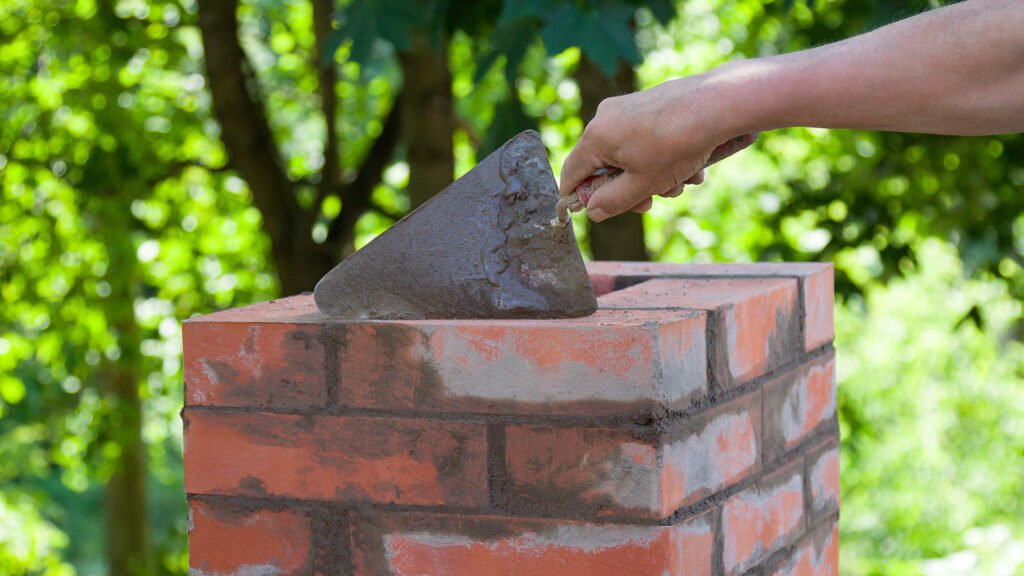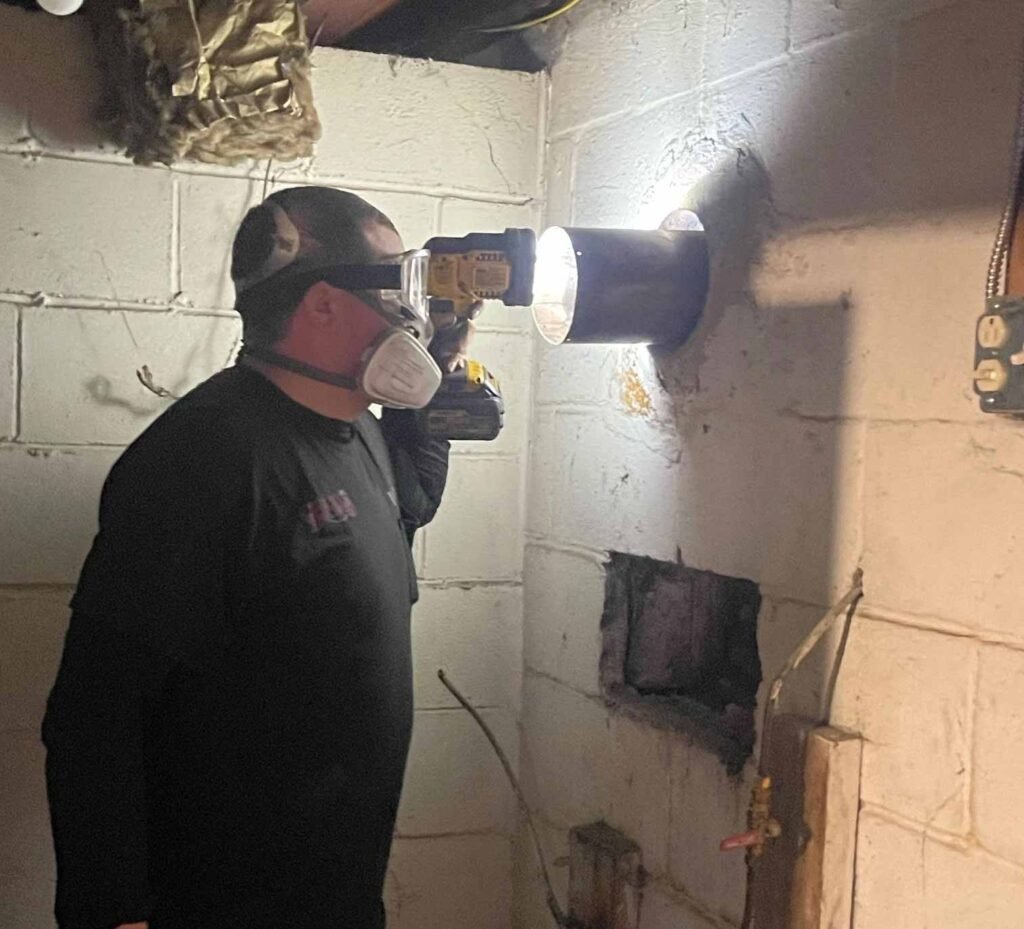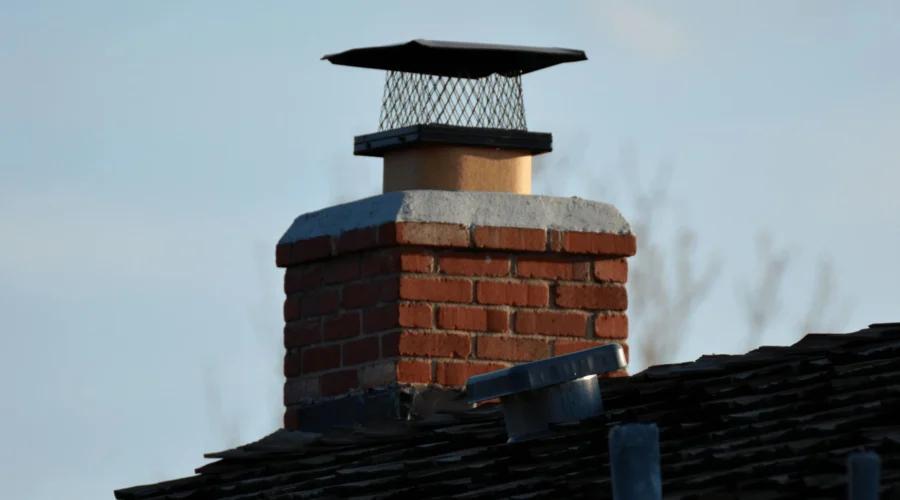The Ultimate Guide to Chimney Masonry Inspection: Ensure Safety and Prevent Costly Repairs
Key Takeaways
- Performing inspections on chimneys along with fireplaces stands as a fundamental requirement for protecting against fires and for upholding structural stability while enabling safe operation.
- Routinely scheduled inspections reveal potential hazards including creosote accumulation and obstructions together with deterioration which may trigger fire hazards and carbon monoxide accumulation.
- Annual inspections of chimneys must be planned as a necessary step before operating your fireplace during wintertime. Safety maintenance and early issue detection along with improved operational efficiency come from routine inspections of chimneys and fireplaces.
- The accumulation of creosote within chimney spaces happens during wood combustion operations because it functions as a flammable material. Chimney fires become more likely and fireplaces work less efficiently when creosote builds up thus requiring periodic cleaning of chimneys.
- The summer months approaching the fall season comprise the optimal period for arranging a chimney inspection appointment. You must schedule maintenance checks so that your fireplace will be operational while also being safe to use at the start of heating season.
- Your chimney requires immediate assessment when you detect intense creosote accumulation along with reversed smoke flow towards your house and offensive smells and actual equipment deterioration such as splits or dislodged bricks.
- Professional inspections should be your first choice because they offer results that cannot be matched by observational analysis alone. Certified specialists implement advanced tools and professional knowledge to conduct complete safety evaluations which require their experience to distinguish hidden problems.
- Your chimney operation becomes safer through the installation of a chimney cap which blocks the entry of leaves along with debris and animals and moisture. The installation of a chimney cap improves airflow efficiency and prevents blockages leading to proper operation.
- Select certified professionals whose credentials come from the Chimney Safety Institute of America (CSIA). Search for online reviews that demonstrate their professionalism as well as obtain their detailed written cost estimate before moving forward.
Chimney damages show up before major repairs become necessary through regular maintenance checks. Efficient and well-kept chimneys function better which leads to decreased energy waste.
All fireplace owners who use their chimneys rarely should arrange routine inspections with certified professionals. Any fireplace chimney will eventually accumulate blockages as well as structural problems and creosote buildup which threaten safety no matter how rarely the fireplace is used.
Importance Of Chimney Masonry Inspection
Regular chimney masonry inspections are crucial for maintaining chimney structural integrity and ensuring safety. Ignoring inspections can lead to severe issues like loose bricks, collapsing masonry, or dangerous gas leaks. These problems not only threaten your home but can also impact your family’s safety.
Key Reasons To Inspect Chimney Masonry
- Masonry Damage Assessment: Over time, weather damage weakens mortar joints and bricks. Extreme conditions like the freeze-thaw cycle cause cracks and crumbling, leading to serious repairs if left unchecked.
- Masonry Crack Detection: Small cracks in the structure can expand, allowing water ingress. This speeds up deterioration, especially during winter.
- Mortar Joint Analysis: Worn or missing mortar compromises the entire chimney, increasing collapse risk during high winds or storms.
- Foundation Masonry Check: Shifting foundations can destabilize the chimney, creating alignment problems that require immediate professional attention.
- Weather Damage Assessment: Prolonged exposure to rain and snow leads to water damage over time, weakening both brickwork and stonework.
- Fire Prevention: Damaged bricks or mortar allow high temperatures or sparks to escape, risking a house fire.
- Resale Value Boost: A properly maintained chimney preserves your home’s curb appeal and overall property value.
- Long-term Savings: Early detection of masonry issues prevents costly repairs down the road.
Professional evaluations save us time, stress, and potentially disaster. According to the National Fire Protection Association (NFPA), chimneys should be inspected yearly. Let’s leave DIY tools in the garage—trained experts ensure accurate masonry joint inspections.
For additional guidance, visit the Chimney Safety Institute of America (CSIA). With proper care, our chimneys can stand strong, safe, and ready for cozy winter nights.
Common Issues Found During Inspection
Chimney masonry inspections often reveal problems that can compromise safety and structural integrity. Addressing these issues early ensures the chimney remains functional and protects the home from costly damages.
Cracks In Masonry
Masonry cracks stand as the most frequent structural issue we encounter when checking properties. The freezes of water alongside the aging process with improper building techniques result in cracks detected in masonry structures. Wetness entering minor breaks will freeze and then expand leading the problem to grow more serious with time.
The indications of masonry issues start with brick or stone splits which are visible or spaces in mortar joints and rough surface conditions. Chimney stability together with moisture penetration become severe problems when cracks remain untreated. Determination of masonry cracks plays a vital role in securing the structural base of a chimney.
Hiring a certified professional stands as the only appropriate method to assess masonry damage in buildings. For more information, the Chimney Safety Institute of America (CSIA) offers guidance on maintaining chimney safety (CSIA.org).
Deteriorating Mortar Joints
Mortar joints hold the chimney’s structure together, so their condition is vital. Weather exposure and aging often cause them to weaken or deteriorate, a process known as “spalling.” Missing or eroded mortar compromises the strength of the masonry.
Key indicators include flaking mortar, loose bricks, or gaps between bricks. Masonry joint inspection helps prevent further brickwork degradation and ensures the chimney won’t collapse under its weight. Repairing joints early also avoids expensive rebuilds later—nobody wants that surprise bill!
Including a thorough mortar joint analysis in yearly inspections can extend the chimney’s lifespan. The National Fire Protection Association (NFPA.org) recommends annual inspections to catch these issues promptly.
Water Damage
Water damage often results from poor chimney maintenance or weather conditions. Rain, snow, and ice penetration can erode bricks and mortar, leading to discoloration, mold growth, and structural problems.
Look for stains, rust around the chimney cap, or crumbling surfaces. Weather damage assessment highlights water infiltration risks, especially in areas with extreme winters. Freeze-thaw cycle damage is a common culprit, causing significant wear on stone and brick materials.
To protect against water damage, professional stonework inspections and waterproofing services are essential. Timely action prevents long-term harm and keeps the chimney performing its critical functions.

Steps Involved In A Professional Chimney Inspection
Inspecting a chimney goes beyond a quick look—it’s about ensuring safety and prolonging the life of the structure. Each step is designed to assess specific elements of the chimney to catch problems before they become serious.
Visual Inspection
The visual inspection process detects all damage which can be viewed on the surface. The examination process includes professionals checking for masonry cracks followed by evaluating deteriorated mortar joints together with discoloration from water entry. Chimney stability becomes at serious risk because of neglected problems.
All significant aspects of the inspection included:
- The examination focuses on seeking hidden cracks in masonry structures whereas inspection of the brickwork and stonework checks for damage progression from freeze-thaw processes.
- Professionals need to check mortar joint health because they must detect which parts have gaps and are showing signs of erosion.
- A thorough examination of weather damage includes checking for both water damage indicators such as disintegration of materials and the formation of efflorescence.
Detecting problems during this phase enables homeowners to prevent expenses for large-scale maintenance work. Safety receives higher priority than beautiful appearances at all expert locations since these experts monitor every single damaged brick. Find additional information regarding inspection importance in resources published by CSIA.
Structural Integrity Check
Our inspection focuses on assessing the chimney’s underlying structure for maintenance purpose. A thorough examination should determine whether foundation supports are stable and the upper masonry has shifted or tilted.
Key aspects of the structural integrity check:
- The inspection of foundation masonry consists of checking for fractures alongside inspecting the settling condition to determine any effects on stability.
- The analysis investigates damage from masonry that experiences freezing and expansion of water within it.
- The inspection of brickwork should verify that all individual bricks maintain their position and remain free from both looseness and cracking.
Chimney repairs need to happen immediately when leaning combined with severe signs of damage because these conditions can result in collapse or make the chimney worse. Protection of stability remains the main objective which requires everything to stand without collapsing.
Smoke And Draft Testing
Professionals test how well the chimney drafts smoke out of your home. Poor drafting can result in safety hazards like carbon monoxide buildup or inefficient fireplace performance.
Key steps in smoke and draft testing:
- Checking for blockages in the flue that may restrict airflow.
- Testing the draw of the draft under various conditions, including wind direction.
- Identifying issues like poor construction or obstructions that lead to backdrafting problems.
Proper airflow ensures smoke exits efficiently and keeps your home smoke-free and safe. Need more technical guidance? Refer to the NFPA for advice on ventilation standards.
Tools And Techniques Used For Chimney Masonry Inspection
Professional chimney inspections rely on advanced tools and proven techniques to identify issues such as masonry cracks, mortar damage, and structural weaknesses. Using these tools ensures accurate masonry damage assessment and helps maintain chimney safety.
Inspection Cameras
Our profession requires inspection cameras because they help us assess areas inside chimney flues which are difficult to inspect manually. The visual inspection technology delivers precise footage for finding problems related to masonry cracks together with loose brickwork and debris accumulation. High-definition video images assist accurate assessment of masonry cracks and chimney structural integrity.
Two primary types exist among inspection cameras when it comes to operation.
- A push camera works best when maintaining visual clarity throughout straight chimney structures for joint and flue observation.
- A rotating camera system aids in inspecting masonry structures by giving complete view coverage of the entire structure.
Chimney cameras allow technicians to detect problems that emerge between routine visual checks. Some cameras for inspection come equipped with built-in lighting technology to improve the effectiveness of theirappearance. These tools upgrade masonry joint inspections by supporting mortar joint assessment and revealing weather damage caused by freezing conditions. The Chimney Safety Institute of America teaches about the important reasons for this procedure.
Moisture Meters
Excess moisture creates major headaches for chimneys. We rely on moisture meters to detect hidden water damage within brick and stonework. These devices measure moisture levels in the masonry, which helps us identify potential problems like mortar joint deterioration or foundation masonry issues.
- Pin-Type Meters: Use metal probes inserted into masonry to provide direct moisture readings.
- Pinless Meters: Employ sensors to detect moisture without penetrating the surface, useful for fragile structures.
High readings in freeze-thaw cycles can indicate long-term damage risks like cracking or eroding masonry. With this tool, we can perform a detailed brickwork evaluation and prevent extensive repairs. Addressing trapped moisture early also extends the lifespan of the chimney while minimizing maintenance costs.
Chimney Scaffolding
Chimney scaffolding ensures safe access to inspect hard-to-reach areas such as tall chimneys or those with complex structures. Proper scaffolding allows us to evaluate weather damage, conduct stonework inspections, and safely perform masonry joint analyses.
Key features include:
- Adjustable Platforms: Provide safe access at various chimney heights without risking worker safety.
- Durable Materials: Weather-resistant scaffolding supports reliable inspections even in challenging conditions.
- Stability Systems: Minimize movement, enabling precise foundation masonry checks and brickwork evaluations.
Scaffolding also helps us closely inspect intricate details like mortar joints and cracks caused by freeze-thaw cycles. While it may look like we’re setting up for a chimney-cleaning party, rest assured, every step is designed to protect your chimney’s integrity. For safety recommendations on masonry inspections, visit the National Fire Protection Association.
Efficient use of these tools ensures thorough assessments, accurate masonry damage evaluation, and long-lasting solutions.

Benefits Of Regular Chimney Masonry Inspections
Routine chimney masonry inspections are essential for keeping your chimney safe and efficient. They offer more than just peace of mind—let’s break down the advantages:
1. Preventing Costly Repairs
Identifying issues like masonry cracks or mortar joint damage during inspections can save us from expensive repairs. For example, early detection of freeze-thaw cycle damage prevents further weakening of chimney structures. Proactive maintenance always costs less than emergency fixes.
2. Ensuring Structural Stability
A chimney’s structural integrity can weaken over time due to weather damage or aging. Inspections, including masonry crack detection and foundation masonry checks, ensure our chimney remains solid and secure. Ignoring structural flaws could lead to serious safety risks, including collapses.
3. Enhancing Safety
Regular inspections help detect hazards such as loose stonework or unstable brickwork. By ensuring proper masonry joint inspection and addressing issues promptly, we reduce risks of masonry falling, fire hazards, and harmful gas leaks like carbon monoxide.
4. Improving Energy Efficiency
A well-maintained chimney maintains proper draft and ventilation. Spotting issues like gaps in mortar joints or cracks lets us optimize airflow and heat efficiency, reducing energy bills. Clean, intact masonry also minimizes heat loss to ensure a warmer home.
5. Increasing Longevity
Routine weather damage assessments and mortar joint analyses prolong the chimney’s lifespan. Proper care prevents problems, such as erosion from rain or snow, from escalating into irreparable damage. Regular stonework inspections help extend durability for decades.
6. Boosting Property Value
A strong, visually appealing chimney enhances our home’s curb appeal. Buyers value homes with maintained chimneys, making inspections a smart investment when selling. No one wants to inherit chimney repair projects with a new home.
For best practices, we recommend annual inspections by certified professionals. Organizations like the National Fire Protection Association (NFPA) and the Chimney Safety Institute of America (CSIA) provide guidelines for safe chimney maintenance. Stay proactive; it’s safer, smarter, and easier on the wallet.
Conclusion
Regular chimney masonry inspections are critical for keeping homes safe, efficient, and looking their best. By addressing masonry damage assessment, we can avoid dangerous situations like collapsing structures or fire hazards. A thorough brickwork evaluation helps ensure your chimney’s structural integrity and prevents long-term damage.
Key inspection focus areas include:
- Masonry joint inspections: Checking for gaps or deterioration that could compromise the chimney’s stability.
- Mortar joint analysis: Ensuring joints remain strong to avoid moisture penetration and structural weakening.
- Masonry crack detection: Spotting cracks caused by freeze-thaw cycle damage, which worsens in regions with severe winters.
- Weather damage assessment: Examining stonework or brickwork for erosion from rain, snow, or wind.
A professional assessment can also include foundation masonry checks to stabilize the entire feature. Skipping inspections isn’t just risky—it can turn minor issues into major expenses.
Frequently Asked Questions
Why are regular chimney masonry inspections important?
Regular inspections of chimney masonry systems detect early signs of damage such as structural cracks together with loose mortar and weather-related damage which prevents major repair costs and safety hazards. Staff at maintenance companies inspect chimneys to ensure stability and their ability to function safely.
How often should I have my chimney inspected?
Annual inspections of chimneys should be performed according to the recommendation of the National Fire Protection Association (NFPA). Regular inspections during each year make it possible to detect problems early while also enabling proper maintenance activities.
What are common issues detected during chimney inspections?
The main problems affecting masonry structures include cracks in the walls and mortar joints deterioration as well as water infiltration and structural weakness. Early recognition of these issues leads to prevention of extensive maintenance work that ensures safety conditions.
Can chimney inspections enhance property value?
The value of a home increases after regular inspections because they prove that chimneys remain solid, safe and properly maintained which attracts future property buyers.
Should I attempt to inspect my chimney myself?
It is not advisable for homeowners to inspect their chimneys independently since they might overlook vital problems. Certified experts do professional evaluations to deliver comprehensive assessments along with precise solutions.
What tools are used in professional chimney inspections?
Inspection cameras coupled with moisture meters allow professionals to assess inaccessible areas and tall chimney structures through the use of scaffolding for safe inspection.
What are the risks of neglecting chimney inspections?
Failure to conduct inspections creates serious problems such as gas leakage and structural collapse of masonry that eventually leads to costly emergency repairs. Proper upkeep guarantees security together with long durability.
How can I prevent water damage to my chimney?
Implement effective waterproofing methods and complete swift crack fixes to maintain chimney caps in order to stop water entry. Professional annual checks allow for early identification of water issues so they can receive prompt solutions.
Are annual chimney inspections costly?
You can reduce future repair expenses by investing in annual inspections since these checks usually have affordable costs. These items deliver both protection against misfortunes and extended life expectancy.
Who should I contact for chimney inspections?
Call certified professionals including those who hold CSIA accreditation to perform complete reliable inspections on your chimney.


